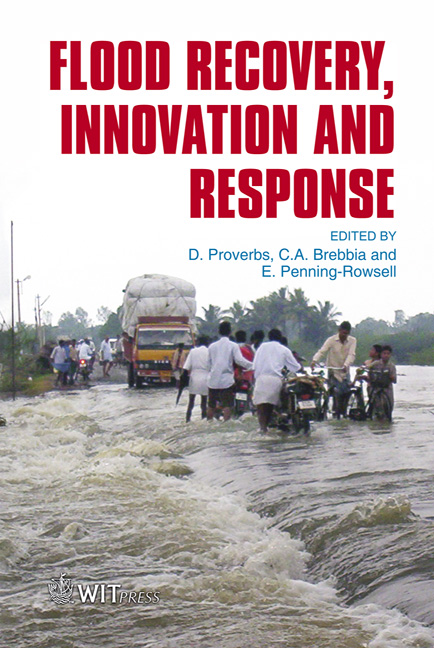The October 2000 Flood At The Po River And Sesia River Junction
Price
Free (open access)
Transaction
Volume
118
Pages
9
Page Range
37 - 45
Published
2008
Size
1,139 kb
Paper DOI
10.2495/FRIAR080041
Copyright
WIT Press
Author(s)
M. Fugazza, P. Magri, L. Natale & F. Savi
Abstract
During the October 2000 flood more than 80 km2 of rural and settled areas located in the floodplain close to the junction of the Sesia and Po rivers were inundated. The flooding was studied combining three different mathematical models: a 1D model, a 2D model and a lumped, conceptual model. The propagation of the flood wave along a reach of 76 km of the Po river was carried out by applying the 1D model and considering the outflow through the breaches in the overtopped levees. The outflow inundated the Casale Monferrato floodplain and exited into the Po river where it joins with Sesia river. The inundation of the floodplain was simulated by means of both the 2D mathematical model and the conceptual model. The 2D computational grid was deduced from the LiDAR digital elevation model of the river junction integrated by bathymetric surveys. The 2D model proved to be more accurate in simulating the dynamics of the flooding when compared to the 1D model. This more traditional approach does not seem acceptable since discrepancies in the water surface elevations computed by means of 2D and 1D models are as large as the levees freeboard usually adopted in real world design of the Po river levees. Keywords: flood propagation, shallow water equations, river junctions. 1 Introduction Historical flood studies are important tools for floodplain management since they provide valuable information that can be used to predict extreme hydrologic events (Chery and Filali [6]), to develop flood forecasting systems (Bates et al. [3]) and to engineer the risk analysis of flood protection systems (Ganoulis [8]).
Keywords
flood propagation, shallow water equations, river junctions.





